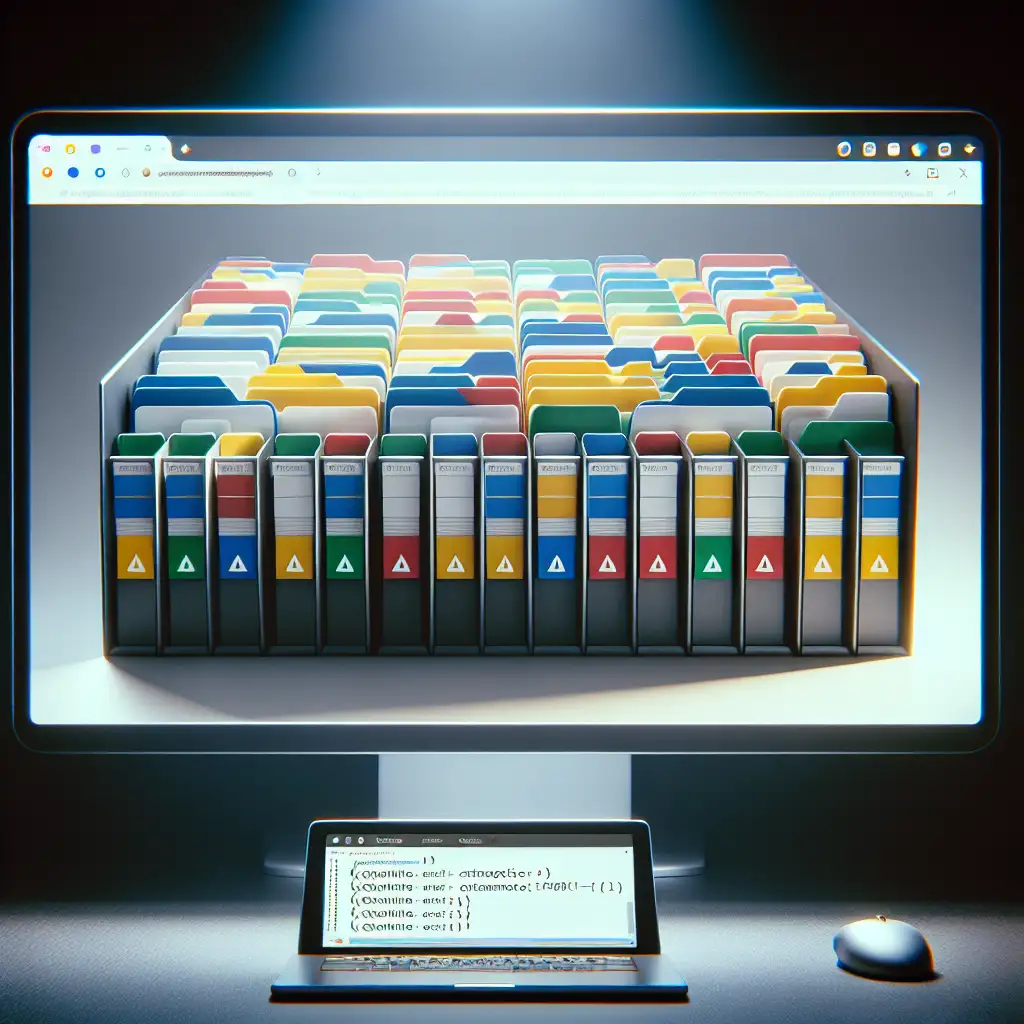Mastering Google Drive: How to Efficiently Organize and Automate Your Workflow
Forget the myth that Google Drive is just cloud storage. Unlock its hidden potential as a dynamic workspace by learning how to organize files smartly and automate routine tasks, turning it into your productivity powerhouse.
In today’s fast-paced digital world, it’s easy to get overwhelmed by the sheer amount of files, documents, and data we accumulate. Without a proper system, your Google Drive can quickly become a cluttered mess, making it harder to find what you need and slowing you down. But mastering Google Drive’s organizational tools and automation capabilities can help you streamline your workflow—whether you’re working solo or collaborating with a team.
Here’s a step-by-step guide to help you get the most from Google Drive:
1. Create a Logical Folder Structure
A solid folder structure acts as the backbone of your Google Drive organization. Start by categorizing your files into broad groups and then create subfolders for specific projects or types of documents.
Example:
- Work
- Projects
- Project A
- Project B
- Meeting Notes
- Presentations
- Projects
- Personal
- Finances
- Travel Plans
- Health
Tip: Use consistent naming conventions for your files and folders, such as YYYY-MM-DD_ProjectName or ClientName_Report, so you can instantly recognize what a file contains without opening it.
2. Use Color Coding to Prioritize
Google Drive lets you color-code folders, which is a simple yet powerful way to visually separate projects by priority or status.
- Red for urgent tasks
- Green for completed projects
- Blue for ongoing work
This visual cue speeds up file recognition, especially when you’re juggling multiple deadlines.
3. Leverage Google Drive Search and Advanced Filters
Google Drive’s search function is incredibly powerful but often underutilized. You can search not only by file name but also by file type, owner, keywords within documents, and date modified.
Try this: Click the dropdown arrow in the search bar to open advanced filters and narrow down your search, for example, by selecting type “Spreadsheets” or owner “Me.”
4. Utilize Starred Files and Shortcuts
Star important files or folders you need quick access to by right-clicking and selecting “Add to Starred.” This creates a personalized quick-access list.
Similarly, if you work in shared drives or have files scattered across multiple folders, create shortcuts instead of duplicates. Right-click the file → Add shortcut to Drive → choose where the shortcut will live. This keeps your Drive decluttered without creating multiple copies.
5. Automate Tasks with Google Drive and Google Workspace
Automation is where your Google Drive transforms from storage into a dynamic workflow tool.
-
Use Google Forms linked to Sheets: Collect data automatically (e.g., surveys, sign-ups). Responses are gathered in a Google Sheet in your Drive, ready for analysis.
-
Set up Google Drive notifications: Use Google Drive’s built-in notifications or third-party tools like Zapier to alert you via email or Slack when files are added, modified, or shared with you.
-
Explore Google Apps Script: For power users, writing small scripts can automate repetitive tasks like renaming files, moving folders, or creating backups.
Example Automation:
Suppose every time you receive a completed Google Form, you want the respondent’s file automatically saved in a specific folder labeled by month:
- Write a Google Apps Script triggered on form submission.
- The script moves or copies the response Sheet to the right folder based on the submission date.
This reduces manual filing and keeps your Drive consistently organized.
6. Use Shared Drives for Collaboration
If you work with a team, Shared Drives are a game-changer compared to regular “My Drive” folders. Files in Shared Drives belong to the team rather than an individual, eliminating issues when someone leaves the project.
Best practices:
- Assign clear roles and permissions (Viewer, Commenter, Editor).
- Maintain a shared folder structure with agreed naming conventions.
- Use the Drive activity dashboard to track changes and collaboration history.
7. Regular Maintenance: Schedule “Digital Decluttering”
Even the best system needs upkeep. Set a calendar reminder every month or quarter to:
- Delete outdated or duplicate files.
- Archive completed projects in a “2023 Archive” folder.
- Review shared file permissions to ensure proper access.
Wrapping Up
Mastering Google Drive’s organizational tools and automation features requires initial effort, but the payoff in saved time and reduced frustration is enormous. By thoughtfully structuring your folders, using visual cues, harnessing search and automation, and maintaining order, you transform your Drive from a digital junk drawer into a productivity powerhouse.
Start applying these tips today and see how your workflow becomes smoother, faster, and more focused.
Need more? Stay tuned for upcoming posts where we deep-dive into Google Apps Script automation hacks and best practices for team collaboration in Shared Drives!
